Yumyeong Hoegwan (유명회관)
11.5 Km 9245 2021-05-14
18, Geumnam-ro 131 Beon-gil, Buk-gu, Gwangju
+82-62-512-5574
Even before the mad cow disease crisis, Yumyeong Hoegwan has only been serving locally-bred hanu beef. The fresh meat, sirloin, and prime ribs are delicious and they also use rice and kimchi made in Korea. The restaurant has a lot of business and group customers, but it is also good for family occasions, wedding receptions, and other social gatherings.
YangDongHo Traditional House (Hanok 152) [Korea Quality] / 양참사댁(양동호 가옥 / 한옥152) [한국관광 품질인증]
11.5 Km 173 2020-12-10
24, Darasil-gil, Hwasun-gun, Jeollanam-do
+82-10-9646-5087
Yangchamsadaek (Yangdongho’s former name) or National Cultural Property No. 152 is a traditional hanok accommodation. Dalasil Village, Hwasun, Jeollanam-do, where the house is located, is a town with traditional houses and fields, where interestingly those who have the surname of Jeju Yang live together.
Yangchamsadaek is a typical noble's house in the southern region with the ㄷ-shaped main building and the ㅡ-shaped detached building form the ㅁ shale. It is expected that the main building was built in the 18th century and the detached building at the end of 19th century. In 2013, the current owner has taken over the antique house and started running a hanok stay, and his daughter, Jo A-ae, a curator and culture planner, added modern touches to turn it into a culture complex, Hanok 152. The wide lawn is sometimes rented for music performance, traditional wedding, or outdoor wedding, and other times it serves as a venue of one-day classes for hanbok experience, Korean food experience, etc.
As for rooms, there are four options: big room and small room in Anchae (main building), and Daecheong room and bed room in Sarangchae (detached building). The rooms are decorated with traditional cabinets and folding screens with embroidery, displaying the beauty of an antique house. The main floor, which is much bigger than that of other houses, has been renovated by the owner. The main floor in the main building, with a comfortable sofa and a rug, is modern and luxurious, whereas the main floor in the detached building is cozy with a floor table and Korean cushions. Toiletries are not available in the bathroom but provided upon request to the information desk. Space rental is also available. Various events such as traditional wedding, small wedding, first birthday celebration, 70th birthday celebration, small workshop, or one-day class can be held here. Moreover, traditional hanbok experience is always available at 15,000 won per person. Korean food experience is notified on Instagram and requires reservation. As the cost varies depending on the number of participants and the date, make sure to inquire over the phone.
Also located in the village are Hanjae House (National Cultural Property No. 154) and World Heritage Hwasun Dolmen Site. Note that the Unjusa Temple, famous for the Cheonbulcheontap Pagoda, is a 15-minute drive away.
Grand Magasin Lotte (Gwangju) (롯데 백화점-광주점)
11.6 Km 1529 2016-12-13
268, Dongnip-ro, Dong-gu, Gwangju-si
+82-62-221-1000
Situé à Dong-gu dans la ville de Gwangju-si, la branche de Gwangju du grand magasin Lotte accueille un cinéma Lotte, des restaurants à thème, un centre culturel, une galerie d’art, une agence de voyage, et plus encore afin de proposer une culture complète du style de vie.
나주목사내아
11.6 Km 27266 2021-02-24
Jeollanam-do Naju-si Geumseonggwan-gil 13-10
+82-61-332-6565
나주목사내아는 조선시대 나주목사의 관저로서 상류주택의 안채와 같은 평면 구조로 이루어져 있으며 안채는 순조 25년(1825년) 건립된 것으로 건물 구조는 전통 양식인 한옥 ㄷ자형이다. 나주목사내아는 현재 전남 문화재자료 제 132호로 지정되어 있다. 나주는 조선시대 관아건물이 많이 남아있어 문화유적 답사지로서 적합하다.
* 규모 - 내아 1동, 행랑채 1동
Hwasun Dolmen [Patrimoine Mondial de l’UNESCO] (화순 고인돌군 유적)
11.6 Km 5488 2020-06-04
Goindol 1-ro, Hwasun-gun, Jeollanam-do
+82-61-379-3178
Le site de dolmens de Hwasun est situé autour des chutes du col qui relie Dogok-myeon Hyosan-ri et Chunnyang-myeon Daesin-ri. Les indicateurs d’études présupposent que parmi les 980 pierres à Dogok-myeon Hyosan-ri, il y a environ 135 dolmens. De plus, parmi les dalles de pierre endommagées, environ 100 d’entre elles maintiennent leur forme.
Il y a environ 250 dolmens à Hyosan-ri, incluant les actuels et ceux faits dans des carrières de pierre. A travers ces études, nous avons pu réaliser qu’il y a 124 dolmens parmi les 3309 pierres localisées dans la partie de Chunnyang-myeon Daesin-ri. Au moins 300 d’entre elles ont conservé leur état. Les recherches montrent qu’il y a 23 dolmens ayant des stèles funéraires.
Le caractère spécial des dolmens de Hwasun est que dans l’enceinte d’une petite région, il y a en environ 596 qui sont rassemblés et la plus grosse pierre de Corée y est aussi située.
Les dolmens de Hwasun sont inscrits au patrimoine mondial depuis le 2 décembre 2000 (numéro 997, avec les dolmens de Gochang et Gangwha), d’où les perspectives de développer le site en tant que destination de voyage du monde.
* zone – sous-division 235 – 2 051 951 m²
Musée artistique de Woo Jae Gil (우제길미술관)
11.7 Km 1701 2022-09-19
140-6, Uijae-ro, Dong-gu, Gwangju-si
+82-62-224-6601
Le musée artistique de Woo Jae Gil a été fondé par Woo Jaegil, un artiste renommé qui a reçu de nombreux prix de la part de prestigieuses manifestations et institutions comme la biennale de Gwangju 1995 et le ministère de la culture et des sports, pour avoir contribué au développement de la culture artistique à Gwangju. Gwangju a traditionnellement été une ville emblématique des arts et de la culture, avec la biennale de Gwangju ainsi que de nombreux festivals culturels organisés chaque année dans la ville.
Le musée artistique de Woo Jae Gil a été établi dans l’espoir de sensibiliser le public à propos de l’art moderne et de revigorer le secteur de l’art dans la région. En plus de ses vastes resources d’art et de la collection des oeuvres de Woo Jaegil, le musée permet également aux visiteurs d’observer la vie des artistes et comment leurs oeuvres sont produites. Le musée possède deux étages supérieurs et deux étages au sous-sol, où se trouvent une salle d’exposition au sous-sol, une salle de stockage et une boutique d’art. Les oeuvres de Woo Jaegil de 1995 à aujourd’hui sont conservées dans le musée aux côtés de quelques peintures abstraites emblématiques de la région du Honam. Woo Jaegil est un artiste renommé souvent appelé « l’artiste de la lumière » en référence à son influence et ses accomplissements en art moderne. Il est né à Kyoto au Japon en 1942 et a étudié le design industriel à l’université de Gwangju en 1987. Il a participé à environ 180 expositions et concours dans le monde entier, et a remporté de nombreux prix.
Marché Daein de Gwangju / Marché artistique Daein (광주 대인시장 / 대인예술시장)
11.7 Km 1578 2023-11-15
7-1, Jebong-ro 194beon-gil, Dong-gu, Gwangju
+82-62-233-1420
Le marché Daein de Gwangju est un bon exemple des changements que les marchés traditionnels ont du subier pour rester attractif dans la socitété moderne. C'était oroginairement le centre commercial des habitants du quartier qui venaient faire les courses, acheter des produits ménagers, etc. Mais avec l'apparition des grands supermarchés dans les 1990, le marché Daein est devenu de moins en moins attractif. A partir de cette période là, un grand nombre de magasins ont commencé à fermer les portes.
Cependant, le marché s'est vu revigoré en 2008 pendant le Gwangju Biennale. Beaucoup de magasins vides ont été loués pour accueillir des petites expositions d'arts, ce qui a créé un marché artistique. Grâce à ces efforts, le marché Daein a été désigné 'Attraction culturel' en 2013. Le marché est toujours très lié à l'art qui l'a sauvé. Les commerçants et les artistes vivent et travaillent ensemble en harmonie. Le marché nocturne qui ouvre ses portes tous les samedis est aussi très populaire.
Yeongmi Oritang (영미오리탕)
11.9 Km 8983 2021-09-13
126, Gyeongyang-ro, Buk-gu, Gwangju
+82-62-527-0249
Yeongmi Oritang has been serving up duck stew (oritang) to the community for over 80 years. Made with ground perilla seeds, soybean paste, chili powder, garlic, and other carefully selected ingredients, the duck is boiled in an earthen pot and seasoned with ginseng, jujube, and water parsley to suit each customer's individual tastes. The dish is served with kimchi side dishes, which are said to enhance the flavor of the duck meat. Since duck is known to be effective in treating liver and geriatric diseases, the restaurant is popular not only for its delicious flavors, but also for the health benefits of its food.
3917 Majung [Korea Quality] / 3917 마중 [한국관광 품질인증/Korea Quality]
11.9 Km 30 2023-04-13
42-16, Hyanggyo-gil, Naju-si, Jeollanam-do
Located in Gyo-dong, Naju-si, Jeollanam-do, 3917 Majung is a cultural space combining a hanok (traditional Korean house) cafe, modern cultural experiences, and hanok guesthouse. The name “3917 Majung” refers to its goal of “welcoming (majung) the modern culture of Naju in 1939 anew in the year 2017.” Spread out on a wide land area of 13,223 m2 are four buildings of Nanpajeong, Sarangchae, Mokseowon, and Siseoheon. All buildings take after the unique combination of Japanese- and Western-style housing commonly seen in the late Korean Empire period.
Nanpajeong is a pavilion constructed during mid-Joseon period, named after its most famous guest Jeong Seok-jin (pen-name: Nanpa), a scholar who led an uprising against Japanese imperialism in late Joseon period. There are two ondol (under-the-floor heating system) rooms in total, separated by a central wooden-floor hall (daecheong), one supporting 3 to 4 guests, one ideal for 2 to 3 guests. The restroom, which is also fitted with a shower booth, is located outside the building.
Eunhaengmok Room 1 and 2, which are housed in the Sarangchae building, are tatami rooms with balcony. Sarangchae’s shower and restroom is located in the building. Mokseowon is likewise made up of three tatami rooms, separated by open floor space and an attic. The shower and restroom is located outside the building. Siseoheon houses a 4-person room and the largest room in the complex, capable of supporting more than 10 guests. There are 2 restrooms and 2 restrooms with shower facilities, making the building ideal for group events.
Grand Magasin Hyundai (Gwangju) (현대백화점-광주점)
12.0 Km 959 2014-12-15
249, Gyeongyeol-ro, Buk-gu, Gwangju-si
+82-62-519-2233
Le Grand Magasin Hyundai de la ville de Gwangju est situé à Buk-gu et possède 6 sous-sols et 11 étages. Il est a la hauteur de sa devise, "Une vie juste", pour les citoyens de la région de Gwangju. Il possède une très grande variété de produits: des articles de mode, des appareils, des objets de la vie quotidienne, des grandes marques coréennes, ainsi que des marques de luxe étrangères.
Il est ouvert de 10h30 à 20h00, plus tard les vendredis, samedis, et dimanches et est fermé un lundi par mois.
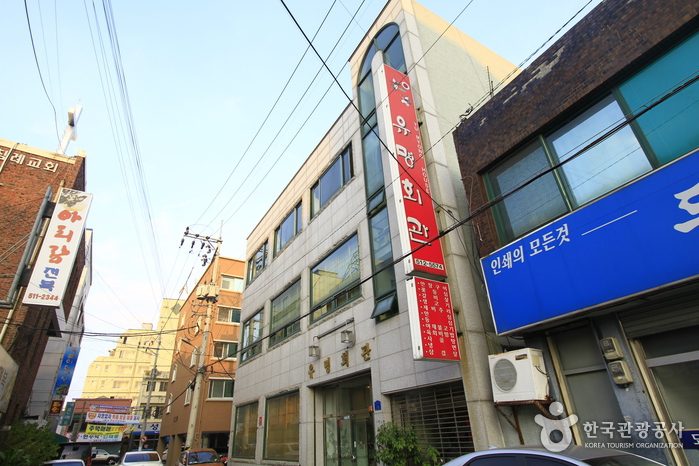
![YangDongHo Traditional House (Hanok 152) [Korea Quality] / 양참사댁(양동호 가옥 / 한옥152) [한국관광 품질인증]](http://tong.visitkorea.or.kr/cms/resource/23/2594823_image2_1.jpg)

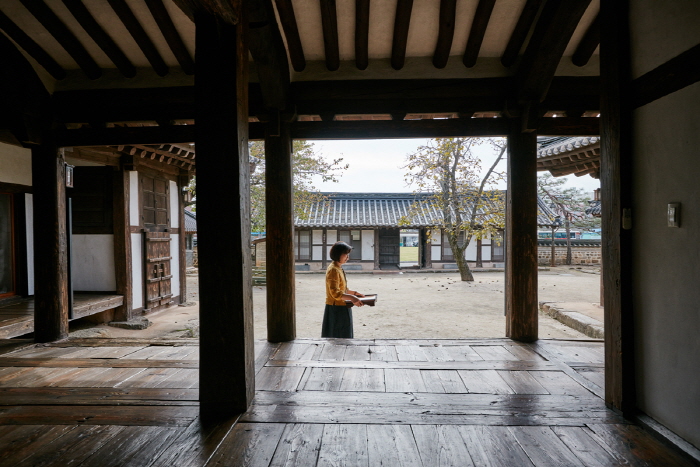
![Hwasun Dolmen [Patrimoine Mondial de l’UNESCO] (화순 고인돌군 유적)](http://tong.visitkorea.or.kr/cms/resource/03/2515703_image2_1.jpg)
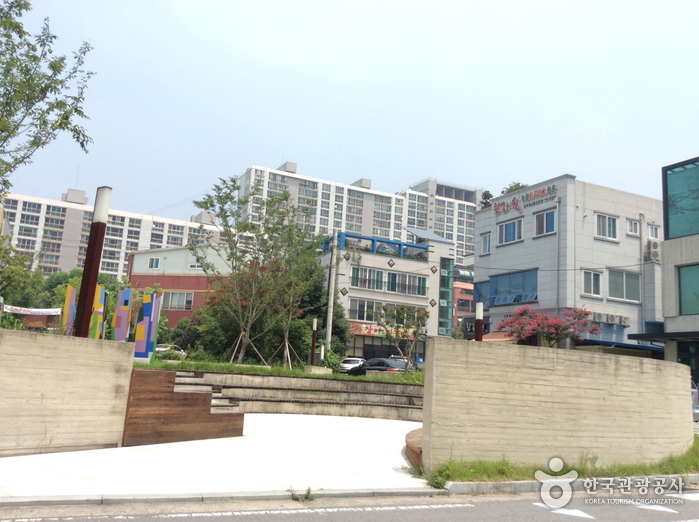
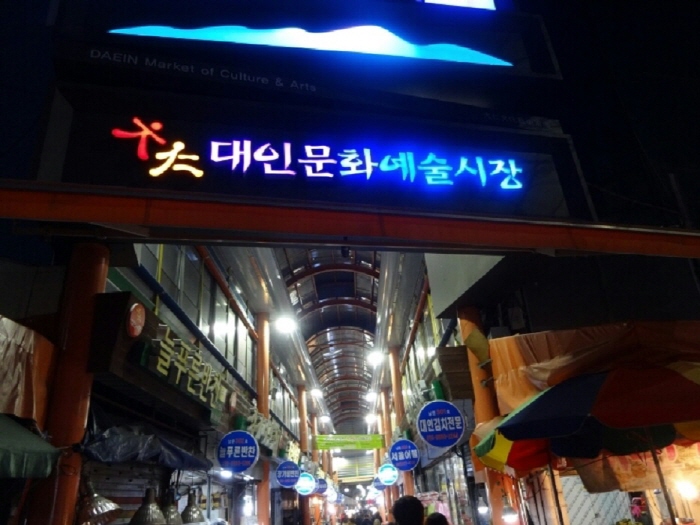
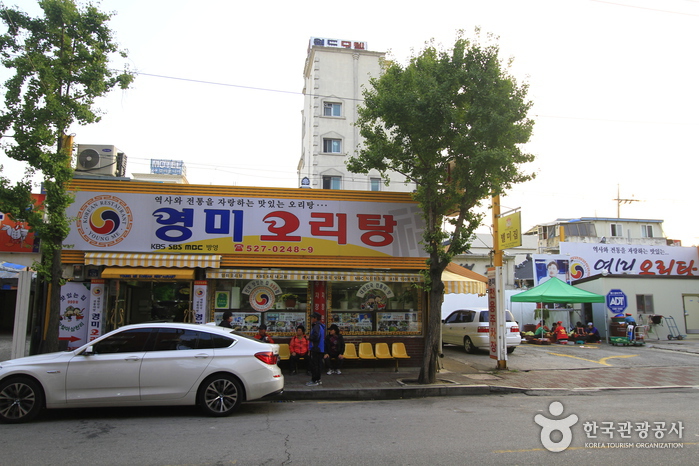
![3917 Majung [Korea Quality] / 3917 마중 [한국관광 품질인증/Korea Quality]](http://tong.visitkorea.or.kr/cms/resource/24/2706124_image2_1.jpg)
 Français
Français
 한국어
한국어 English
English 日本語
日本語 中文(简体)
中文(简体) Deutsch
Deutsch Español
Español Русский
Русский